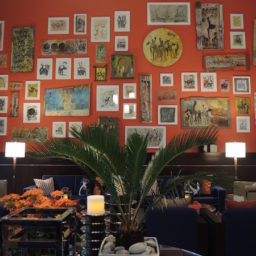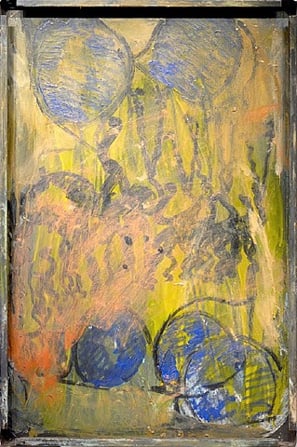

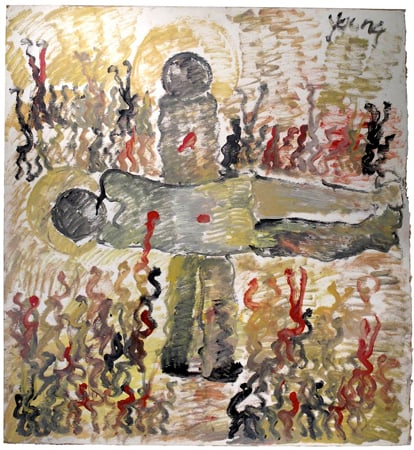
Purvis Young, Brother’s Down (ca. 1994). Paint on pressed board.
Photo: Courtesy of Skot Foreman Fine Art.
Though Outsider Art is detached from artistic tradition, this movement has established a place in our history of art. This organic form of expression first appeared in German psychiatric studies in the early 20th century, which were later viewed by Modern artist Jean Dubuffet, who coined the French term art brut. This pure, unaffected style observed by Dubuffet was then translated to its English form, Outsider Art, by the critic Roger Cardinal in 1972.
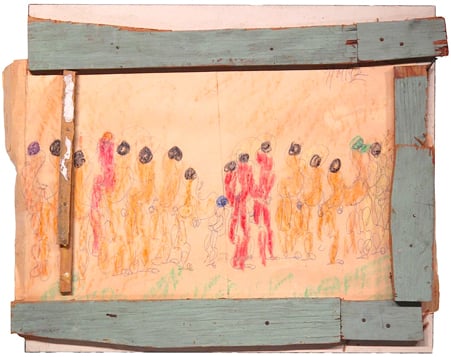
Purvis Young, Linin’ Up (c.1992) Mixed media on wood assemblage.
Photo: Courtesy of Skot Foreman Fine Art.
Despite its connection to artistic critique and its influence on major artists of the 20th and 21st century, Outsider Art has always been based on its distance from traditional practice. The vibrant work created by Outsider artists is considered ‘untainted’ by the art market, galleries, museums, and the traditional study of art. The most remembered Outsider artists, like Henry Darger and Ferdinand Cheval, were reclusive, creating their works in secret without inspiration or input from peers. They made art in its pure, raw form, and the result was a body of work that took on its own unique shape.
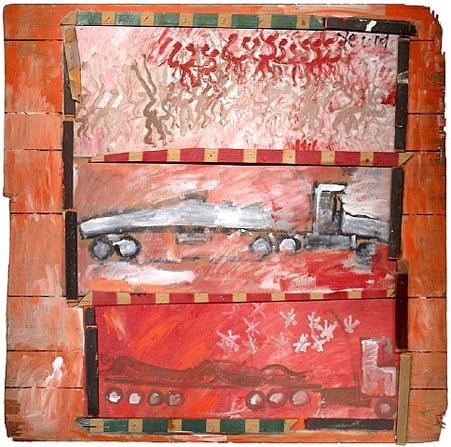
Purvis Young, Free Ridin, (c.1990). Paint on wood assemblage.
Photo: Courtesy of Skot Foreman Fine Art.
Events like the Outsider Art Fair, which took place in New York from January 31 to February 3, keep this spirited tradition alive, and give light to its relevance in the art market. Check out artnet Galleries Members who specialize in the field by browsing our Folk, Naïve, and Outsider Art Marketplace.
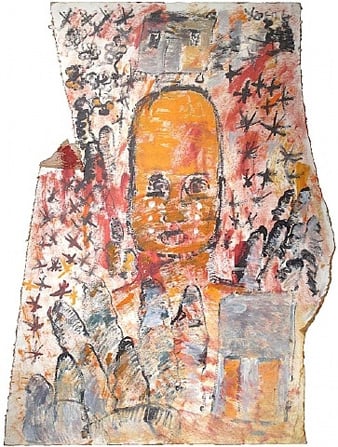
Purvis Young, Nighttime Tears and Shotgun Shacks, (c.1992) House paint on corrugated board.
Photo: Courtesy of Skot Foreman Fine Art.
Self-taught artist Purvis Young (1943–2010) is among those visionaries who made art of his own inspiration. Young’s expressionist works, painted on discarded doors, books, and cardboard, are a reflection on personal experience and urban life. His vibrant sketched figures, animals, and abstract forms give light to his history and emotional expression.

Purvis Young, Blue Eyes, Warrior and Figures (c.1990) Paint and varnish on metal.
Photo: Courtesy of Skot Foreman Fine Art.
View Purvis Young’s celebrated works at Skot Foreman Fine Art.


